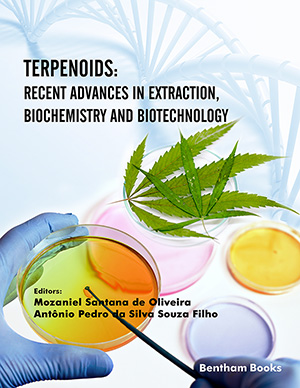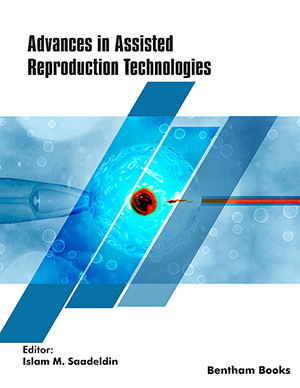
Abstract
Self-attachment of proteins leading to the formation of highly insoluble protein oligomers and aggregates has become an important focus of research owing to its diverse implications in pathophysiology and diseases. This has become a more frequent phenomenon in most neurological and neurodegenerative diseases as well as in dementia. In recent years such an event of protein aggregation has been linked to other disease conditions, disorders or adverse health conditions. Interestingly, aggregation of protein also plays a role in development, growth or metabolism. Most often, physiological proteins are initially bio-synthesised in native or nascent geometrical forms or conformations, but later they undergo specific folding patterns and thereby acquire a stable configuration that is biologically relevant and active. It is highly important that these proteins remain in their biologically active configuration in order to exert their functional properties. Any alteration or change to this structural configuration can be detrimental to their specific functions and may cause pathological consequences leading to the onset of diseases or disorders. Several factors such as the action of chaperones, binding partners, physiological metal ions, pH level, temperature, ionic strength, interfacial exposure (solid-liquid, liquid-liquid, gas-liquid), mutation and post-translational modification, chemical changes, interaction with small molecules such as lipids, hormones, etc. and solvent environment have been either identified or proposed as important factors in conferring the ultimate status of protein structure and configuration.
Among many misfolding protein conformations, self-assembly or aggregation is the most significant. It leads to the formation of highly oligomeric self-aggregates that precipitate and interfere with many biochemical processes with serious pathological consequences. The most common implication of protein aggregation leading to the formation of deposits / plaques of various morphological types is the onset of neurological and neurodegenerative diseases that include Alzheimer’s, Parkinson’s, Huntington, ALS (Amyotrophic Lateral Sclerosis), CJD (Creutzfeldt Jakob Dementia), Prion diseases, Amyloidosis and other forms of dementia. However, increasing studies have revealed that protein aggregation may also be associated with other diseases such as cancer, type 2 diabetes, renal, corneal and cardiovascular diseases. Protein aggregation diseases are now considered as part of “Proteinopathy” which refers to conditions where proteins become structurally abnormal or fail to fold into stable normal configurations. In this review, we reflect on various aspects of protein self-aggregation, potential underlying causes, mechanism, role of secondary structures, pathological consequences and possible intervention strategies as reported in published literature.
Keywords: Protein folding, protein self-assembly, sheet structure, chaperone, neurotoxic, amyloid plaques, aggregation inhibitors, aggregation promoters, aggregation diseases, aggregation mechanism.
[http://dx.doi.org/10.1007/b136464]
[http://dx.doi.org/10.2174/1568013033483285]
[http://dx.doi.org/10.1096/fj.201701266]
[http://dx.doi.org/10.1016/j.ijbiomac.2019.05.109] [PMID: 31128177]
[http://dx.doi.org/10.1007/978-3-319-19920-7]
[http://dx.doi.org/10.3390/ijms20246195] [PMID: 31817979]
[http://dx.doi.org/10.1016/j.ijpharm.2010.02.025] [PMID: 20188160]
[http://dx.doi.org/10.1039/C9RA09350H]
[http://dx.doi.org/10.1038/nrm3658] [PMID: 24026055]
[http://dx.doi.org/10.1242/dmm.024703] [PMID: 27491084]
[http://dx.doi.org/10.1007/3-540-29717-0_9]
[http://dx.doi.org/10.1385/1-59259-394-1:3] [PMID: 12840535]
[http://dx.doi.org/10.1146/annurev.biochem.75.101304.123901] [PMID: 16756495]
[http://dx.doi.org/10.1039/C5AN00342C] [PMID: 26042229]
[http://dx.doi.org/10.1038/nchem.1433] [PMID: 23089868]
[http://dx.doi.org/10.2174/0929867324666170705121754] [PMID: 28685682]
[http://dx.doi.org/10.1111/j.1747-0285.2009.00847.x] [PMID: 19566697]
[http://dx.doi.org/10.1016/j.bbapap.2005.07.008] [PMID: 16084779]
[http://dx.doi.org/10.1016/S0047-6374(02)00098-2] [PMID: 12470900]
[http://dx.doi.org/10.1002/jps.21566] [PMID: 18823031]
[http://dx.doi.org/10.1098/rsfs.2017.0030] [PMID: 29147559]
[http://dx.doi.org/10.1002/pro.3382] [PMID: 29388282]
[http://dx.doi.org/10.3390/cells9010145] [PMID: 31936201]
[http://dx.doi.org/10.1016/j.btre.2016.01.002] [PMID: 28352591]
[http://dx.doi.org/10.1073/pnas.1006424107] [PMID: 21106765]
[http://dx.doi.org/10.1002/jps.21869] [PMID: 19653264]
[http://dx.doi.org/10.1016/j.ccr.2018.04.007] [PMID: 30262932]
[http://dx.doi.org/10.1038/s41598-019-51232-7] [PMID: 31636315]
[http://dx.doi.org/10.3390/ijms19010128] [PMID: 29301328]
[http://dx.doi.org/10.1016/j.jinorgbio.2009.09.023] [PMID: 19853303]
[http://dx.doi.org/10.1038/s41557-018-0031-x] [PMID: 29736006]
[http://dx.doi.org/10.1002/cmdc.201800452] [PMID: 29981273]
[http://dx.doi.org/10.1016/j.ejcb.2017.01.002] [PMID: 28109635]
[http://dx.doi.org/10.1016/j.bpc.2017.05.004] [PMID: 28587777]
[http://dx.doi.org/10.1021/bm060584i] [PMID: 17154479]
[http://dx.doi.org/10.1073/pnas.1507303112] [PMID: 25964322]
[http://dx.doi.org/10.1080/09553009514550251] [PMID: 7884289]
[http://dx.doi.org/10.1016/S0006-3495(04)74237-X] [PMID: 14990496]
[http://dx.doi.org/10.1021/bm3003539] [PMID: 22497483]
[http://dx.doi.org/10.1002/1873-3468.13082] [PMID: 29729013]
[http://dx.doi.org/10.1016/0049-3848(79)90274-3] [PMID: 228444]
[http://dx.doi.org/10.1007/s10719-017-9769-4] [PMID: 28401373]
[http://dx.doi.org/10.1016/j.abb.2014.12.021] [PMID: 25562403]
[http://dx.doi.org/10.1007/s11064-016-1942-9] [PMID: 27220334]
[http://dx.doi.org/10.1073/pnas.1630428100] [PMID: 12888622]
[http://dx.doi.org/10.1016/S0959-4388(99)00013-6] [PMID: 10508741]
[http://dx.doi.org/10.1016/j.febslet.2006.02.067] [PMID: 16529745]
[http://dx.doi.org/10.1016/j.ajpath.2011.01.030] [PMID: 21514440]
[http://dx.doi.org/10.15761/TiM.1000206]
[http://dx.doi.org/10.1038/nrn.2016.13] [PMID: 26988744]
[http://dx.doi.org/10.2174/092986606775338362] [PMID: 16515449]
[http://dx.doi.org/10.1385/MB:31:2:141] [PMID: 16170215]
[http://dx.doi.org/10.1016/j.biocel.2012.05.023] [PMID: 22713792]
[http://dx.doi.org/10.1186/alzrt5] [PMID: 19822029]
[http://dx.doi.org/10.1016/j.tibs.2003.09.009] [PMID: 14607088]
[http://dx.doi.org/10.1126/science.aad2033] [PMID: 26634439]
[http://dx.doi.org/10.2174/1874196700902010193]
[http://dx.doi.org/10.1080/13506129.2019.1693359] [PMID: 31766892]
[http://dx.doi.org/10.1021/bi051608t] [PMID: 16300401]
[http://dx.doi.org/10.1002/9780470572702.ch36]
[http://dx.doi.org/10.1073/pnas.87.7.2843] [PMID: 2320592]
[http://dx.doi.org/10.1097/WCO.0000000000000476] [PMID: 28678039]
[http://dx.doi.org/10.1097/00019052-199610000-00007] [PMID: 8894411]
[http://dx.doi.org/10.1056/NEJM199702133360703] [PMID: 9017939]
[http://dx.doi.org/10.2174/1568013033483230]
[http://dx.doi.org/10.1161/JAHA.113.000098] [PMID: 23608605]
[http://dx.doi.org/10.1016/j.humpath.2011.03.004] [PMID: 21733562]
[http://dx.doi.org/10.1136/jnnp-2014-308724] [PMID: 25604431]
[http://dx.doi.org/10.1093/brain/75.3.408] [PMID: 12978172]
[http://dx.doi.org/10.1161/JAHA.111.000364] [PMID: 23130126]
[http://dx.doi.org/10.1016/S1474-4422(11)70246-0] [PMID: 22094129]
[http://dx.doi.org/10.5935/1518-0557.20170025] [PMID: 28609277]
[http://dx.doi.org/10.2741/3098] [PMID: 18508604]
[http://dx.doi.org/10.1161/CIRCULATIONAHA.111.078915] [PMID: 22949539]
[http://dx.doi.org/10.1073/pnas.1807024115] [PMID: 29915031]
[http://dx.doi.org/10.1001/archinte.165.12.1425] [PMID: 15983293]
[http://dx.doi.org/10.1016/j.jacc.2019.04.003] [PMID: 31171094]
[http://dx.doi.org/10.1186/1750-1326-6-79] [PMID: 22112803]
[http://dx.doi.org/10.3390/ijms20122982] [PMID: 31216785]
[http://dx.doi.org/10.1101/cshperspect.a028035]
[http://dx.doi.org/10.1172/JCI200317522] [PMID: 12511579]
[PMID: 22997874]
[http://dx.doi.org/10.1126/science.1087348] [PMID: 14593165]
[http://dx.doi.org/10.1146/annurev-genet-110711-155524] [PMID: 24274755]
[http://dx.doi.org/10.1126/science.1138718] [PMID: 17991853]
[http://dx.doi.org/10.1007/s00401-017-1670-5] [PMID: 28084518]
[http://dx.doi.org/10.1186/s12915-017-0375-5] [PMID: 28464931]
[http://dx.doi.org/10.1111/j.1365-2559.1992.tb00909.x] [PMID: 1531331]
[http://dx.doi.org/10.1097/WCO.0b013e328364d6b1] [PMID: 23995273]
[http://dx.doi.org/10.1007/s13353-018-0463-4] [PMID: 30203143]
[http://dx.doi.org/10.3390/cancers10060154] [PMID: 29789497]
[http://dx.doi.org/10.1101/cshperspect.a023614] [PMID: 27549118]
[http://dx.doi.org/10.1016/j.tcb.2015.10.011] [PMID: 26597576]
[http://dx.doi.org/10.1101/cshperspect.a024315] [PMID: 28159831]
[http://dx.doi.org/10.1002/pdi.778]
[http://dx.doi.org/10.1021/js960297s] [PMID: 9145374]
[http://dx.doi.org/10.1007/s00018-008-8327-4] [PMID: 18810322]
[http://dx.doi.org/10.1001/archopht.1979.01020010058014] [PMID: 103517]
[http://dx.doi.org/10.1016/j.molmed.2012.03.005] [PMID: 22520268]
[http://dx.doi.org/10.1167/iovs.04-1319] [PMID: 15790870]
[PMID: 9418728]
[http://dx.doi.org/10.1136/bjo.2004.056804] [PMID: 15923502]
[http://dx.doi.org/10.1016/S0161-6420(83)34369-4] [PMID: 6610849]
[http://dx.doi.org/10.1016/S1471-4914(02)02382-1] [PMID: 12127722]
[http://dx.doi.org/10.2217/clp.15.21]
[http://dx.doi.org/10.1038/s41467-018-06761-6] [PMID: 30375379]
[http://dx.doi.org/10.1155/2019/7825804]
[http://dx.doi.org/10.1093/ckj/sfu021] [PMID: 25852856]
[http://dx.doi.org/10.1016/j.yexcr.2007.04.004] [PMID: 17498694]
[http://dx.doi.org/10.1016/j.stem.2018.07.009] [PMID: 30075130]
[http://dx.doi.org/10.1073/pnas.0906509106] [PMID: 19666488]
[http://dx.doi.org/10.1097/SCS.0000000000003600] [PMID: 28230601]
[http://dx.doi.org/10.1164/ajrccm.164.supplement_2.2106061] [PMID: 11734464]
[http://dx.doi.org/10.1021/bi000188z] [PMID: 10828969]
[http://dx.doi.org/10.1038/nrd4593] [PMID: 26338154]
[http://dx.doi.org/10.1042/BST0370692] [PMID: 19614577]
[http://dx.doi.org/10.1038/nrd3050] [PMID: 20190788]
[http://dx.doi.org/10.1016/j.bbagen.2017.10.014] [PMID: 29107146]
[http://dx.doi.org/10.4103/1673-5374.233432] [PMID: 29926816]
[http://dx.doi.org/10.1523/JNEUROSCI.0895-12.2012] [PMID: 22875942]
[http://dx.doi.org/10.1016/j.bbadis.2003.08.003] [PMID: 14559120]
[http://dx.doi.org/10.1021/bi060837s] [PMID: 16893191]
[http://dx.doi.org/10.1242/jcs.179978] [PMID: 26818841]
[http://dx.doi.org/10.1021/acsbiomaterials.8b01196] [PMID: 33405873]
[http://dx.doi.org/10.1074/jbc.REV118.006739] [PMID: 30626733]
[http://dx.doi.org/10.1001/archneurol.2009.180] [PMID: 19667213]
[http://dx.doi.org/10.1371/journal.pone.0187813] [PMID: 29125873]



























